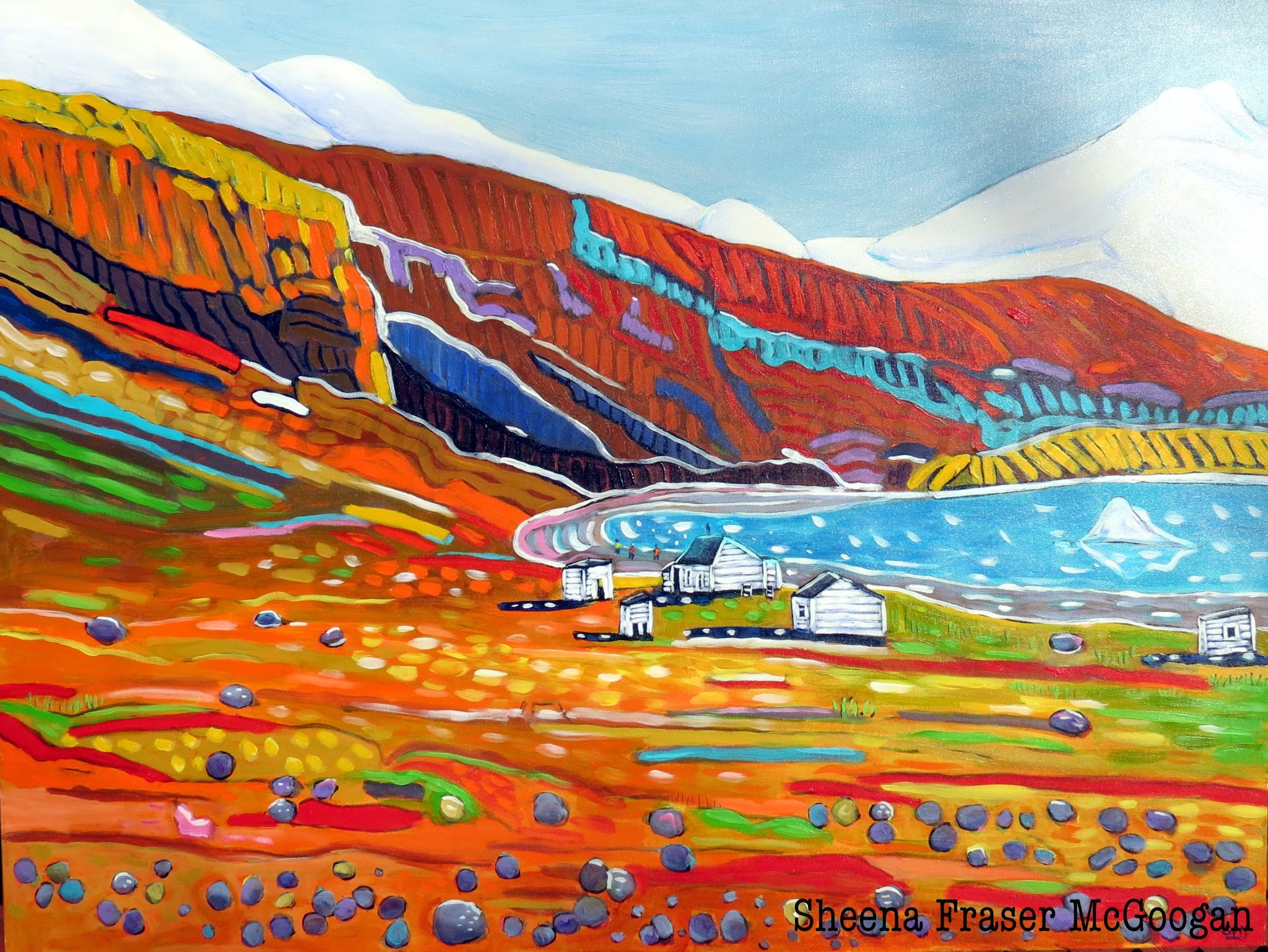Atwood, Belugas & Dundas Harbour: Why sail the Northwest Passage?
DAY EIGHT: Dundas Harbour
Sept. 12
As the ship neared the foot of Croker
Bay, voyagers crowded onto the deck, dazzled by the sunshine magnificence of
Croker Glacier, essentially an ice river pouring down from the Devon Island ice
cap. This was our first look at big ice and we liked it. The bay takes its name
from John Wilson Croker, who served as first secretary of the Admiralty in the
early 1800s.
In 1818, some distance to the west of
here, Royal Navy Captain John Ross attached the name Croker to the Croker
Mountains, which apparently extended across Lancaster Sound. When these
mountains proved to be a fata morgana, an Arctic mirage, the British Admiralty
shifted the name to this deep bay on Devon Island. Oh, and to the Admiralty, John
Ross became persona non grata.
Late in the morning, Margaret Atwood
entertained with an autobiographical talk she called My Life & Writing (1939-2015). She started with her ancestors,
traced her childhood through old family photos, and followed the trajectory of
her career from poetry readings at the Bohemian Embassy in Toronto, through The Handmaid’s Tale, a breakout book
that made her “a little bit famous,” and on to the recent story collection Stone Mattress, which drew on a previous
Adventure Canada voyage for its title story. In response to a question about
why she kept writing, Atwood answered, “Why stop?” Writers are driven not by
external rewards, but by a desire to do what they do.
Afternoon sunshine accompanied us to
Dundas Harbour under a clear blue sky. The abandoned RCMP post was our
destination. It faces southwest over Bernier Bay, so-called in commemoration of
a 1906 stopover by Joseph Bernier. Here we found half a dozen beluga whales
cavorting within five metres of the shoreline – an attraction that alone was
worth the price of admission.
At the RCMP site, several buildings remain
standing: a detachment building (two-person living quarters), a separate house for
Inuit hunters, two latrines, a couple of storehouses, and a dog corral. The
main residence, which features considerable graffiti, contains a few bottles
and several books, the most curious of which is Dog
Crusoe and His Master by Robert Michael Ballantyne.
These buildings were erected in the
1920s to signal Canadian sovereignty. Passenger Dave Story drew attention to
what, beyond the dog corral, appears to be the lay-out of yet another large
square dwelling, marked by stones (probably a tent-like communal centre for
Inuit hunters). On a hill overlooking these buildings stands a white-fenced
cemetery containing two old graves marked by new gravestones.
Here we find the graves of constables
Victor Maisonneuve (1899-1926) and William Robert Stephens (1902-1927). The
first committed suicide, the second died while hunting. The HBC rented the
outpost briefly in the 1930s, and the RCMP maintained it until 1951, when it
moved to the less isolated Craig Harbour. The Mounties continue to maintain the
cemetery. In 1944, during the return voyage of the St. Roch through the
Northwest Passage, Henry Larsen called in here. , , ,
